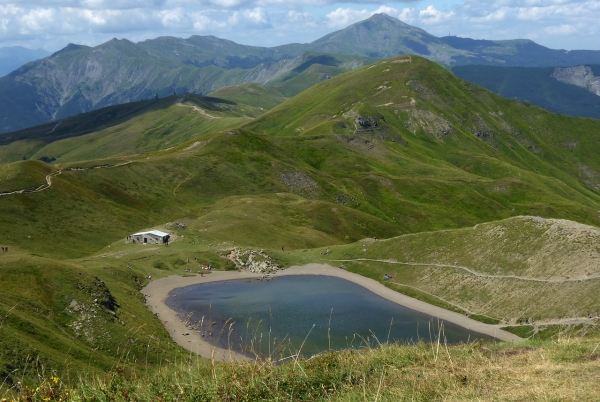Tectonically active mountains play an important role in the natural CO2 regulation of the atmosphere.
Tectonically active mountains play an important role in the natural CO2 regulation of the atmosphere. Competing processes take place here: At Earth’s surface, erosion drives weathering processes that absorb or release CO2, depending on the type of rock. At depth, the heating and melting of carbonate rock leads to the outgassing of CO2 at the surface. In the central Italian Apennine Mountains, researchers led by Erica Erlanger and Niels Hovius from the GFZ German Research Centre for Geosciences and Aaron Bufe from the Ludwig-Maximilians-Universität München have now investigated and balanced all of these processes in one region for the first time – using, among others, analyses of the CO2 content in mountain rivers and springs. They found that weathering in this region leads to an overall CO2 uptake. However, these near-surface processes only determine the CO2 balance in areas with a thick and cold crust. On the western side of the Central Apennines, the crust is thinner and the heat flow is higher. There, CO2 outgassing from depths is up to 50 times greater than CO2 uptake through weathering. All in all, the analysed landscape is a CO2 emitter. The structure and dynamics of Earth's crust, therefore, controls the release of CO2 here more strongly than chemical weathering. The study was published today in the scientific journal Nature Geoscience.
Background: The Role of Mountains in Earth's CO2 Budget
In addition to man-made CO2 emissions, many natural processes – both biological and geological – also play a role in balancing the global CO2 budget. Mountain landscapes strongly modulate the carbon cycle, and it is important to adequately consider the competition of CO2 emission and CO2 uptake occurring here in climate models.
On the one hand, rocks on the Earth's surface are weathered by chemical dissolution processes: erosion continuously exposes rock, which – depending on the type of rock – weathers at different rates and either absorbs or releases CO2. Silicate minerals, for example, bind CO2 and form limestone. In turn, the weathering of carbonate and sulphide-containing minerals releases CO2.
Read more at GFZ GeoForschungsZentrum Potsdam, Helmholtz Centre
Photo Credit: pagarau via Pixabay




